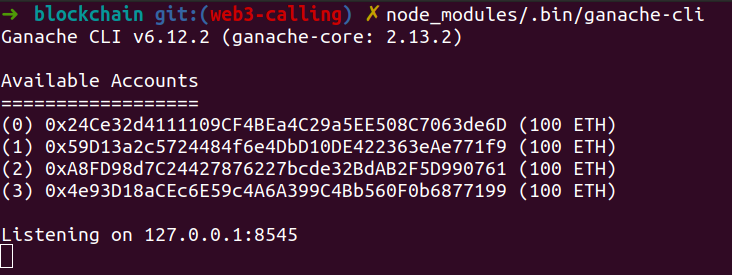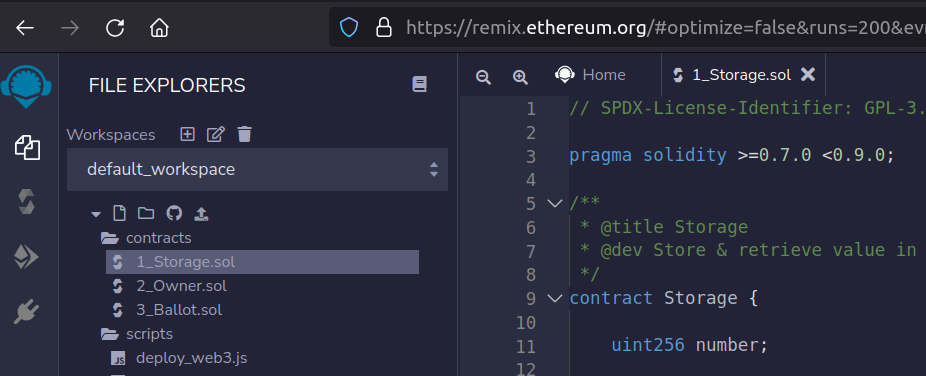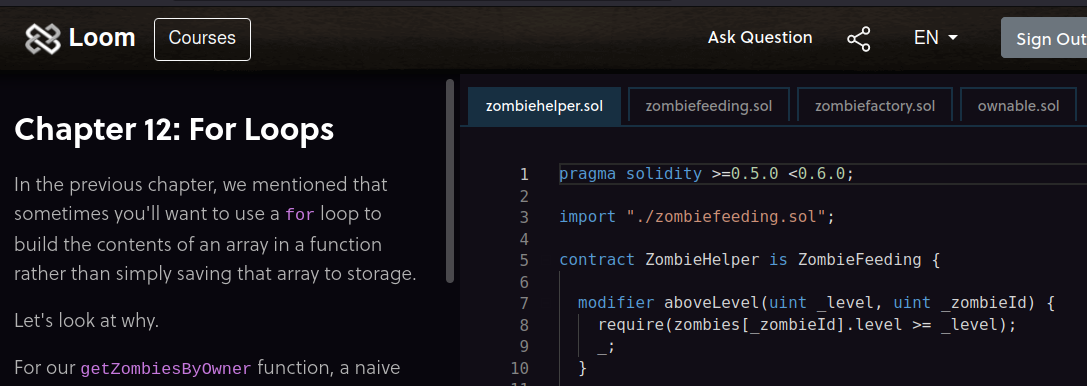
Tooling for Solidity coders
2021-12-13 by Nicolas ZozolSetup as quick as possible your professional environment for learning web3 coding.
This article will explain to regular developers how to setup a local environment for coding, testing and deploying some Ethereum-like blockchains. I will give you some best practices and valuable web resources, so that you can start your Web3 journey comfortably.
TL;DR; Watch this Truffle beginners video from EatTheBlocks.
Where to start
You can very quickly start using Remix IDE. It's an online webtool. I have been able to deploy my first token (RBTA) with it. It's yet another shitcoin, but you can buy some to tip me 😊
To deploy the RBTA token, I used this tutorial by Ivan on Tech

You can also learn solidity and web3js with Cryptozombies. It's quite deep by the way, but there is no creativity as you must exactly type the correct line.

Use a local IDE
Remix is fun for one day, but you want your files with solid tooling. You will code some Solidity but also some React or Vue for the web, and you probably want to keep your beloved tooling.
As I'm a Jetbrains fan, I added the Solidity plugin backed by Jetbrains. It brought some bugs, so I had to remove it then reinstall it. It's quite unusual... but it happened
Use truffle
Truffle is a tooling framework. You have a set of preconfigured tools, but you don't add their code.
Install it using yard add truffle. I would avoid installing it globally, so that you control exactly the version. In
that case you would type node_modules/.bin/truffle instead of just truffle - there are some tips for npm pros on the web.
You will be able to :
- compile your code and create contracts :
truffle compile - make automated tests of your contracts :
truffle test - deploy the contracts :
truffle developwill start the chain and open a consoletruffle migrate --resetwill redeploy all contracts
EatTheBlocks team makes great contents on Solidity coding. Here is the one for Truffle beginners. This video is mandatory !
Use ganache
Ganache is a tool that allows you to run an ethereum blockchain with plenty of options. Truffle is using Ganache behind the scene, but it's useful to be able to manage it yourself. We are coders, so we will use the CLI version 😁.
Install it with yarn add ganache-cli. Like with truffle, avoid installing it globally.
ganache-cli: start a brand new blockchainganache-cli -db "./db-path" -m "bread car ... color": start a persisting blockchain with defined account
Here is the EatTheBlocks Ganache video.
Test and mocks
It's quite easy to test a Solidity contract. There is one major problem though. You often want to inject an address - the oracle address in my case - and only the contract owner should do this. But while coding, you don't know the owner address yet.
The idea is to make a mock contract. I code in a MockCodeFan.sol file that is the copy of the final CodeFan.sol, but
adding these lines at the end:
contract MockCodeFan {
// might be constant
address private OWNER = 0xf17f52151EbEF6C7334FAD080c5704D77216b732;
address private ORACLE = 0xf17f52151EbEF6C7334FAD080c5704D77216b732;
function setOracle(address oracle) public{
require(msg.sender == OWNER);
ORACLE = oracle;
}
// ....
/**
* TESTABLE FUNCTIONS and events - Should be deleted in deployment
*/
function setOwner(address owner) public{
OWNER = owner;
}
event Debug(address _from, string domain);
}
So in the test I can start with
let [johndoe, nik, oracle ] = accounts;
await contract.setOwner(nik);
await contract.setOracle(oracle, {from: nik});
Debug
Now that you have Solidity code, you want to understand what's going on before sending millions into the contract. But there
is no console.log() or debugger attachable in Solidity 🤷. You don't easily know what's
going on in the machine.
The technique is to create a Debug event and listen to it while testing.
event Debug(address _from, string domain);
function addSite(address user, string calldata domain) external {
emit Debug(user, domain);
require(msg.sender == ORACLE);
// ...
}
To simplify things, I used truffle-assertions library :
const truffleAssert = require('truffle-assertions');
result = await contract.addSite(oracle, domainNames[0],
{from: oracle});
// -> will display the event
truffleAssert.prettyPrintEmittedEvents(result);
Next step
I used Remix to deploy my first token, Truffle for my first real projects. And I will probably try Hardhat soon.
The main reason is that you can use console.log() directly in the solidity code (wow 😁) and 0xGorilla created
Smock, a mock plugin for Hardhat. That proves Hardhat can be much more flexible than
Truffle. But as it gives a lot of options and plugins before starting, I would not start directly with it.
Here is the adoption table of major web3 companies

